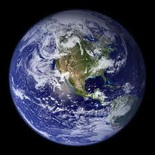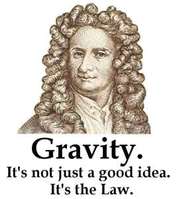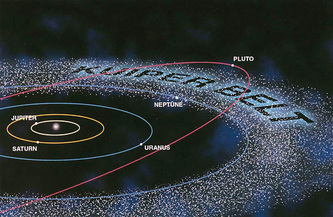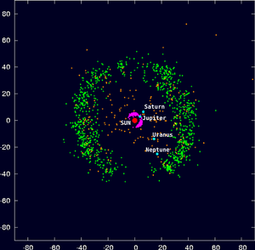The Physics Behind Planet Revolutions and Rotations

This is a picture of our planet, Earth. We live on it and use it's resources everday. We drink the water from its oceans, we mine for its precious metals and gems. We drill for oil, and we breath its air. The conditions on this planet make it the only one we could survive on that we know of. With all of this stuff going on down here on Earth, it's hard to think about the big picture. We are constantly in motion, spinning and whirling around the Sun every second of everyday. There are also seven other planets that do the same thing everday. Here are a few facts about the motion of our planet and several others.
Planets
A planet to us is an object that orbits the Sun, has sufficient mass for its own center of gravity to overpower rigid body forces so it resembles a hydrostatic equilibrium (in other words, it has enough mass to not implode upon itself, or in even simpler terms, it's round), and is large enough to have room around its orbit. Until recently, our list of planets that orbit our sun had been Mercury, Venus, Earth, Mars, Jupiter, Saturn, Uranus, Neptune and Pluto. But in the last couple of years Pluto has been defined as a dwarf planet. It was found that it couldn't be defined as a regular planet because it is in the Kuiper belt. The Kuiper belt, below, is a belt of small dwarf planets and comets with orbits less than two hundred years. Pluto's orbit is well into the Kuiper belt, as you can plainly see, so it is much more of a dwarf planet than a regular planet.
Fun Facts About Rotation and Revolution
Here is a sampling of the difference in rotation and revolution around the sun between planets:
(measured in Earth days and hours)
(measured in Earth days and hours)
Mercury
Venus
Earth
Mars
Jupiter
Saturn
Uranus
Neptune
Venus
Earth
Mars
Jupiter
Saturn
Uranus
Neptune
Rotation: 58.7 days Revolution: 87.96 days
Rotation: 243 days Revolution: 224.68 days
Rotation: 24 hours Revolution: 365.26 days
Rotation: 24.6 hours Revolution: 686.98 days
Rotation: 9.84 hours Revolution: 11.862 years
Rotation: 10.2 hours Revolution: 29.456 years
Rotation: 17.9 hours Revolution: 84.07 years
Rotation: 19.1 hours Revolution: 164.81 years
Rotation: 243 days Revolution: 224.68 days
Rotation: 24 hours Revolution: 365.26 days
Rotation: 24.6 hours Revolution: 686.98 days
Rotation: 9.84 hours Revolution: 11.862 years
Rotation: 10.2 hours Revolution: 29.456 years
Rotation: 17.9 hours Revolution: 84.07 years
Rotation: 19.1 hours Revolution: 164.81 years
Physics and Planets

The connection of physics and planets is very strong. Physics is the study of motion, and planets are always in motion so naturally they go hand in hand. Planets are constantly moving around the Sun, so the Sun's gravitational force has a constant hold over us and all of the other planets. Also, if you just consider the motion of things on our own planet, Earth, gravity plays a big part. If we had no gravity, things would be floating all around, and all of this physics we do wouldn't mean anything! All of physics studies is based around gravity, so if there wasn't any, or even if there was less, most of the equations we use wouldn't even work. If we were to take a ball to our moon and throw it into the air, there is a good chance it woud never fall down because the moon has a very weak gravitational pull. We need our gravity to do physics, it's as simple as that.
Here is a link to a fun gravity game!
http://www.fungamesplanet.com/online_games/flash-arcade-game.php?gameid=6837&gamename=Gravitee
http://www.fungamesplanet.com/online_games/flash-arcade-game.php?gameid=6837&gamename=Gravitee
More interesting websites:
http://nineplanets.org/
http://www.iau.org/
http://planetphysics.org/
http://nineplanets.org/
http://www.iau.org/
http://planetphysics.org/


